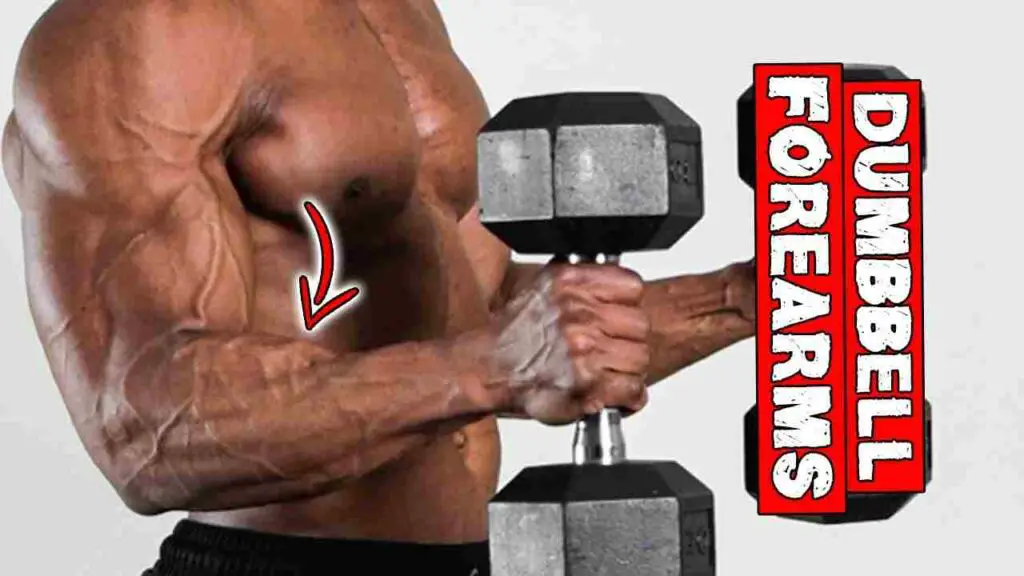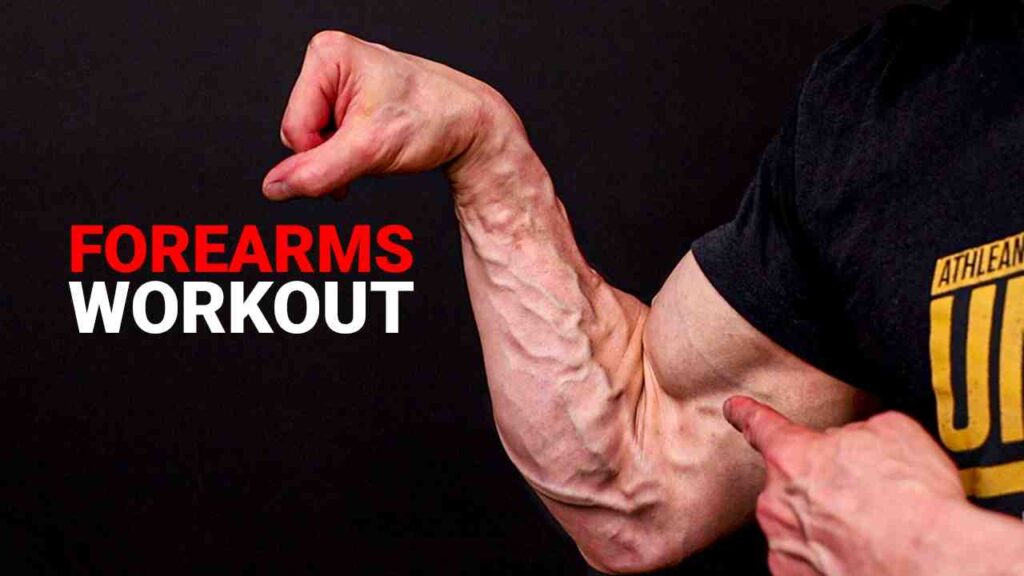Forearm Mass Building is an important aspect of overall fitness, especially for those involved in strength training or sports that require grip strength. The forearm muscles play a crucial role in many everyday activities such as carrying groceries, typing, and even shaking hands. In addition to enhancing daily function, building forearm mass can also improve performance in various sports and weightlifting exercises.
Some common forearm muscle exercises that are often used for Forearm Mass Building include wrist curls, reverse wrist curls, hammer curls, grip strengthening exercises, and farmer’s walks. These exercises are designed to isolate and target the forearm muscles, helping to improve overall strength and size.
Anatomy of the Forearm Muscles
The forearm is a complex area of the body that contains numerous muscles that are essential for daily function and sports performance. Understanding the anatomy of the forearm muscles is critical for effective Forearm Mass Building.
The forearm is divided into two compartments – the anterior compartment and the posterior compartment. The anterior compartment is located on the palm side of the forearm and contains the flexor muscles, which are responsible for flexing the wrist and fingers. The posterior compartment is located on the back of the forearm and contains the extensor muscles, which are responsible for extending the wrist and fingers.
Some of the major muscles involved in Forearm Mass Building include:
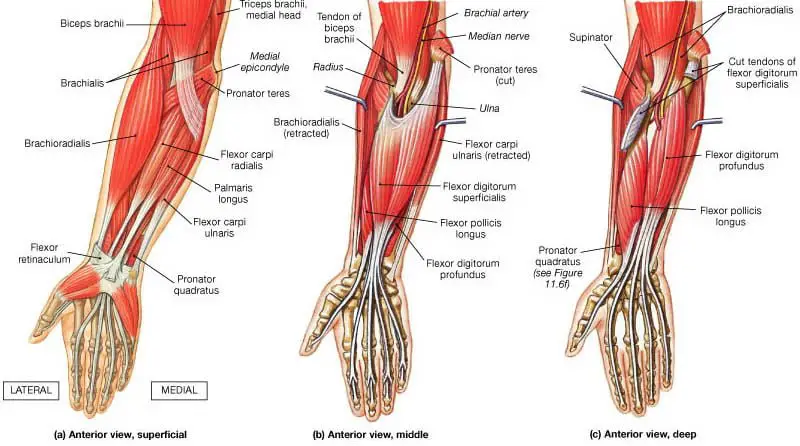
- Brachioradialis: This muscle is located in the upper forearm and helps in flexing the elbow joint. It is often targeted with exercises such as hammer curls and reverse curls.
- Pronator Teres: This muscle is located in the anterior compartment and helps in the pronation of the forearm. It is often targeted with exercises such as pronation with a dumbbell.
- Flexor Carpi Radialis: This muscle is located in the anterior compartment and helps in wrist flexion and radial deviation. It is often targeted with exercises such as wrist curls and reverse wrist curls.
- Extensor Carpi Radialis Longus: This muscle is located in the posterior compartment and helps in wrist extension and radial deviation. It is often targeted with exercises such as reverse wrist curls and wrist extensions.
- Palmaris Longus: This muscle is located in the anterior compartment and helps in wrist flexion. It is often targeted with exercises such as wrist curls.
- Extensor Carpi Ulnaris: This muscle is located in the posterior compartment and helps in wrist extension and ulnar deviation. It is often targeted with exercises such as wrist extensions and reverse wrist curls.
SHOP FOR THE ADJUSTABLE DUMBBELL SET ON AMAZON
By understanding the anatomy of the forearm muscles and targeting them with specific exercises, you can effectively build mass and strength in these muscles, leading to improved grip strength, sports performance, and overall functionality.
Benefits of Strong Forearm Muscles
Here are some of the benefits of Strong Forearm Muscles:
- Improved Grip Strength: Strong Forearm Muscles can significantly improve grip strength, which can help you lift heavier weights and perform exercises more effectively.
- Increased Forearm Size: Forearm Mass-building exercises can help to develop the muscles in your forearm, resulting in increased size and definition.
- Injury Prevention: Strong Forearm Muscles can help to prevent common injuries such as carpal tunnel syndrome and tennis elbow, which can be caused by repetitive wrist and arm movements.
- Enhanced Athletic Performance: Strong Forearm Muscles can improve your overall athletic performance by allowing you to perform a wider range of exercises, improving your grip strength and giving you more control over your movements.
- Improved Daily Function: Strong Forearm Muscles can enhance your daily life by improving your grip strength and enabling you to perform tasks that require hand and arm strength, such as carrying heavy objects or opening jars.
- Aesthetically Pleasing: Well-developed Forearm Muscles can be aesthetically pleasing, giving your arms a more defined and muscular appearance.
- Improved Hand Dexterity: Strong Forearm Muscles can enhance hand dexterity and coordination, allowing you to perform tasks that require fine motor skills, such as playing musical instruments or typing on a keyboard.
- Better Arm Stability: Strong Forearm Muscles can improve arm stability, which is important for exercises such as bench presses, pull-ups, and rows, as it helps to prevent injuries and ensures proper form.
- Reduced Risk of Injury: Strong Forearm Muscles can help to reduce the risk of injury to your wrist, hand, and elbow, which are common sites for injuries in athletes and weightlifters.
- Improved Overall Strength: Strong Forearm Muscles can improve your overall strength, allowing you to lift heavier weights and perform exercises more effectively, resulting in better gains and progress.
Incorporating specific exercises to target your forearms can lead to these benefits and help you achieve a more balanced and functional physique.
How strong forearms can benefit athletes, weightlifters, and people in manual labor jobs?
Strong forearms can provide numerous benefits to athletes, weightlifters, and people in manual labor jobs. Here are some real-world examples of how strong forearms can benefit these individuals in their respective fields:
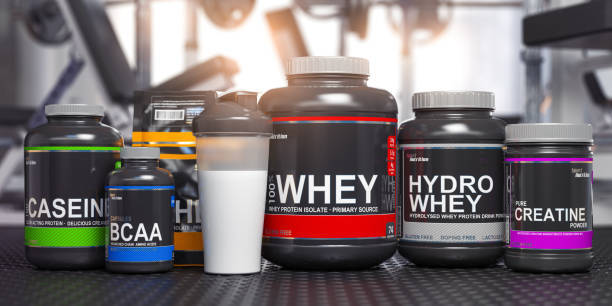
- Athletes: In sports like tennis, basketball, and baseball, strong forearms are essential for better control over the racket, ball, or bat. Additionally, combat sports such as boxing and mixed martial arts require strong forearms for gripping and grappling techniques. Building forearm mass can improve an athlete’s grip strength, endurance, and power, allowing them to perform better in their sport.
- Weightlifters: Strong forearms are vital for weightlifters, as they allow them to maintain a secure grip on the bar during heavy lifts like deadlifts, shrugs, and rows. Without a strong grip, weightlifters may struggle to hold onto the bar, limiting their ability to lift heavy weights and build overall strength. Forearm Mass Building can improve a weightlifter’s grip strength and endurance, helping them to lift heavier weights and perform better in their sport.
- People in manual labor jobs: Many jobs require manual labor, such as construction, farming, and landscaping. These jobs often involve using tools that require grip strength and endurance, such as shovels, hammers, and axes. Building forearm mass can help people in these jobs to perform their tasks more efficiently and safely by improving their grip strength, and reducing the risk of injuries caused by dropping tools.
SHOP FOR THE RESISTANCE BAND ON AMAZON
In summary, building forearm mass can benefit athletes, weightlifters, and people in manual labor jobs by improving their grip strength, endurance, and power, allowing them to perform better in their respective fields.
Forearm Muscle Building Exercises
Here are some exercises that can help build forearm muscles:
Wrist Curls
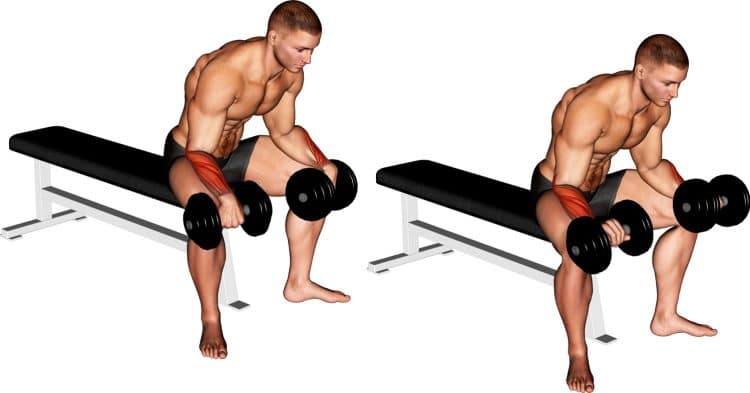
This exercise targets the wrist flexor muscles and is performed by holding a dumbbell in each hand and slowly curling the wrists upwards towards the forearms.
- Sit on a bench or chair with your forearms resting on a table or bench, palms facing upwards.
- Hold a dumbbell in each hand, and slowly curl your wrists upwards towards your forearms.
- Hold for a second, then slowly lower the weight back down to the starting position.
- Sets & Reps: 3 sets of 12-15 reps
Reverse Wrist Curls
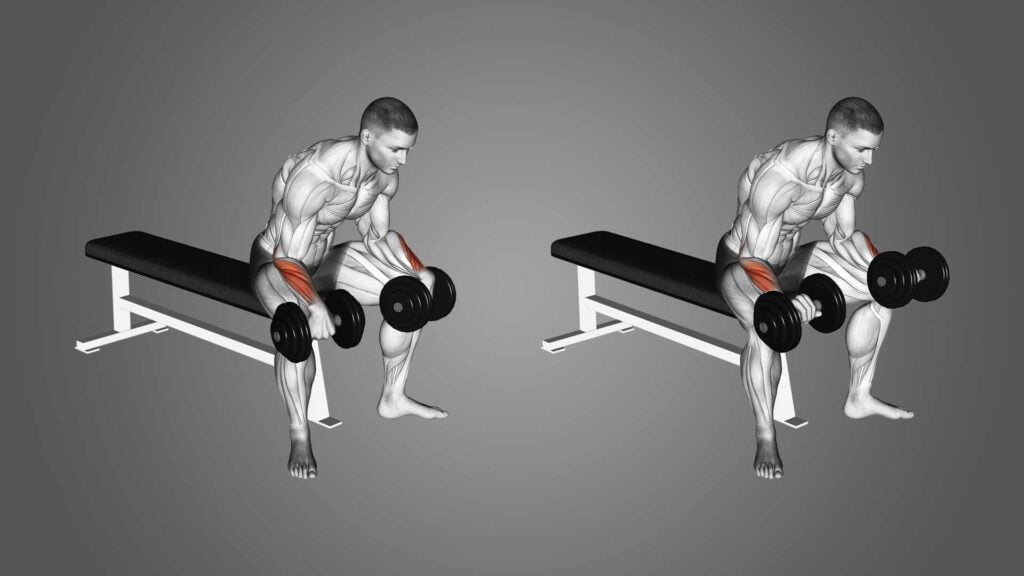
This exercise targets the wrist extensor muscles and is performed by holding a dumbbell in each hand and slowly curling the wrists downwards towards the forearms.
- Sit on a bench or chair with your forearms resting on a table or bench, palms facing downwards.
- Hold a dumbbell in each hand, and slowly curl your wrists upwards towards your forearms.
- Hold for a second, then slowly lower the weight back down to the starting position.
- Sets & Reps: 3 sets of 12-15 reps
Hammer Curls
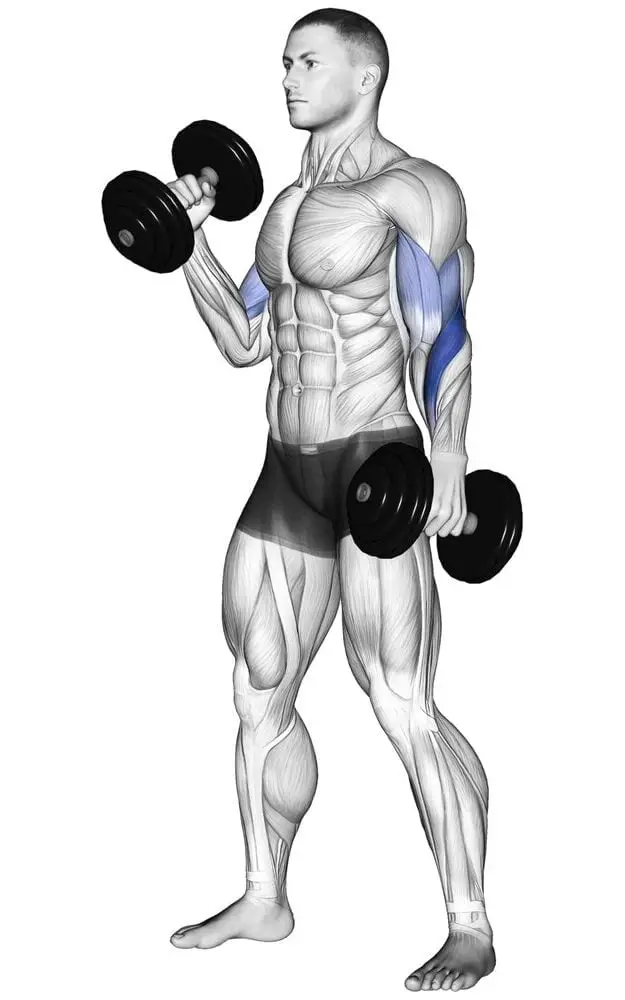
This exercise targets the forearm muscles, including the brachioradialis, and is performed by holding a dumbbell in each hand with the palms facing inwards towards the body and curling the weights up towards the shoulders.
- Stand with your feet shoulder-width apart, holding a dumbbell in each hand with your palms facing inwards towards your body.
- Keeping your elbows close to your sides, slowly curl the weights up toward your shoulders.
- Hold for a second, then slowly lower the weights back down to the starting position.
- Sets & Reps: 3-4 sets of 10-15 reps
Grip Strengthening Exercises
These exercises target the grip strength of the hands and can be performed using a hand gripper, heavy objects, or towel pull-ups.
- Grip a hand gripper tightly in your hand and squeeze it as hard as possible.
- Hold for a few seconds, then release and repeat for the desired number of repetitions.
- Another grip-strengthening exercise is to hold a heavy object, such as a dumbbell or kettlebell, with one hand and walk around for a certain distance or time.
- You can also try towel pull-ups, where you hang a towel over a pull-up bar and grip the ends of the towel to perform pull-ups.
Farmer’s Walk
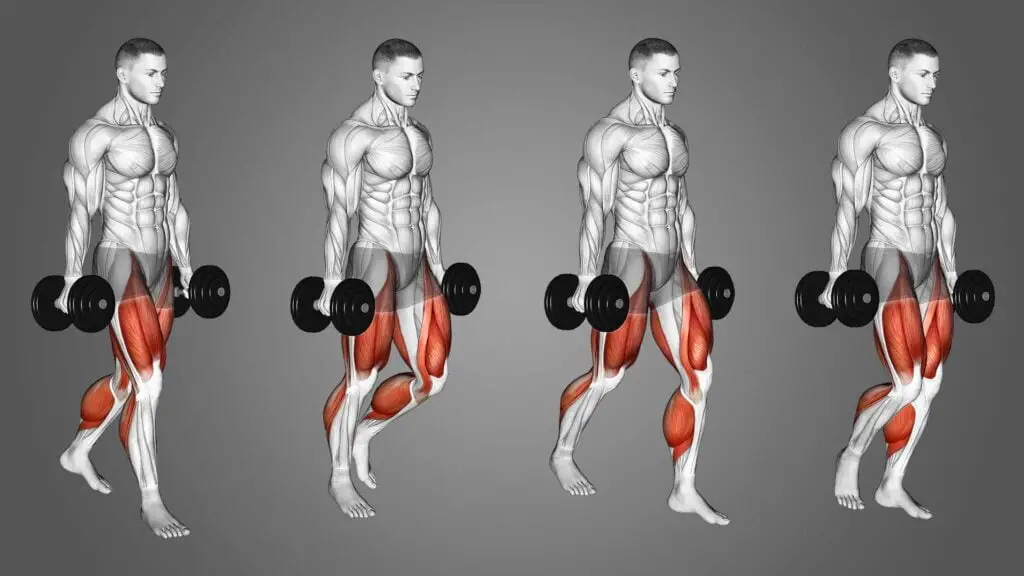
This exercise targets the forearms and grip strength and is performed by holding a heavy weight in each hand and walking forward while maintaining a strong grip on the weights.
- Stand with a heavy dumbbell or kettlebell in each hand, palms facing inwards towards your body.
- Walk forward while keeping your shoulders down and your back straight.
- Take small, controlled steps and focus on maintaining a strong grip on the weights.
- Sets & Reps: 2-3 sets, walking for 20-30 seconds each
Plate Pinches
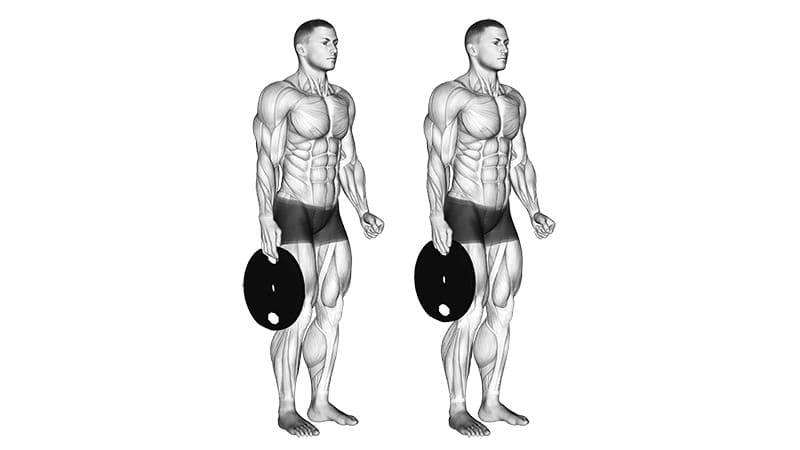
This exercise targets the grip strength of the hands and is performed by holding two weight plates with the fingers and squeezing the plates together to maintain a grip.
- Hold two weight plates with your fingers, gripping the outer edges of the plates.
- Lift the plates off the ground and hold them for a certain amount of time, focusing on squeezing your fingers together to maintain your grip.
- Lower the plates back down and repeat for the desired number of repetitions.
- Sets & Reps: 3 sets, holding for 20-30 seconds each
Barbell Wrist Curls
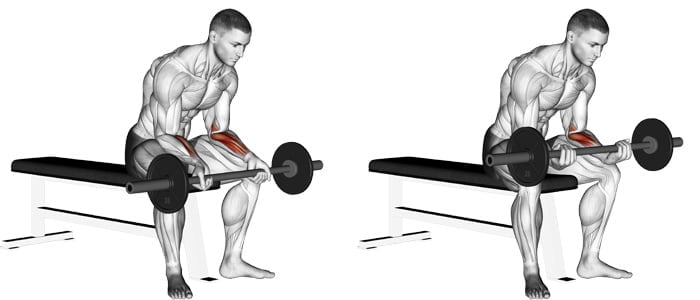
This exercise targets the wrist flexor muscles and is performed by holding a barbell with an underhand grip and curling the wrists upwards towards the forearms.
- Sit on a bench or chair with your forearms resting on a table or bench, palms facing upwards.
- Hold a barbell with an underhand grip, with your hands shoulder-width apart.
- Slowly curl your wrists upwards towards your forearms.
- Hold for a second, then slowly lower the weight back down to the starting position.
- Sets & Reps: 3-4 sets of 12-20 reps
Remember to always warm up before beginning any exercise, and stretch your forearm muscles after your workout.
Equipment for Forearm Muscle Building
When it comes to equipment for forearm mass building, there are several options available, including:
- Dumbbells: Dumbbells are a great option for forearm muscle-building exercises such as wrist curls, hammer curls, and reverse wrist curls. They can be used to target specific areas of the forearm and allow for a wide range of motion. However, the weight of dumbbells may not be enough for advanced lifters seeking to build significant forearm mass.
- Barbells: Barbells are another effective option for forearm mass-building exercises such as barbell wrist curls and reverse barbell curls. They allow for heavier weights to be lifted, which can help stimulate muscle growth. However, barbells can be more challenging to control and require a good form to avoid injury.
- Resistance Bands: Resistance bands are a versatile and portable option for forearm muscle building. They can be used for exercises such as wrist extensions and grip strengthening exercises. Resistance bands provide constant tension throughout the entire range of motion, which can help increase muscle activation. However, they may not be challenging enough for advanced lifters seeking to build significant forearm mass.
- Grip Strengtheners: Grip strengtheners are a specialized piece of equipment designed specifically to target forearm muscles and improve grip strength. They can be used for exercises such as squeezing and holding exercises. Grip strengtheners can be effective for improving forearm strength and endurance. However, they may not provide enough resistance for advanced lifters seeking to build significant forearm mass.
SHOP FOR THE GRIP STRENGTHENER ON AMAZON
Overall, each type of equipment has its pros and cons when it comes to forearm mass building. It’s important to choose equipment that matches your skill level and fitness goals. Incorporating a variety of equipment into your forearm workouts can help keep your routine interesting and challenging.
Common Mistakes to Avoid
When it comes to forearm mass building, there are several common mistakes that people make that can hinder their progress or even lead to injury. Here are a few:

- Using too much weight: One of the biggest mistakes people make when training their forearms is using too much weight, which can lead to improper form and increase the risk of injury. To avoid this, start with lighter weights and gradually increase the weight as you become stronger.
- Neglecting proper form: Another mistake people make is neglecting proper form, such as using their back or shoulders to lift the weight instead of their forearms. This can limit the effectiveness of the exercise and increase the risk of injury. Make sure to use proper form and technique for each exercise.
- Not stretching or warming up properly: Neglecting to stretch and warm up properly before beginning a forearm workout can lead to muscle strain and other injuries. Take the time to stretch and warm up your forearms before beginning your workout to reduce the risk of injury and improve performance.
- Overtraining: Another mistake people make is overtraining their forearms by doing too many exercises or lifting too heavy for too long. This can lead to muscle fatigue, injury, and slow down progress. It’s important to give your forearms enough time to rest and recover between workouts.
- Neglecting to train all forearm muscles: The forearm consists of several different muscles, and neglecting to train all of them can lead to imbalances and a less aesthetic appearance. Make sure to incorporate exercises that target all of the forearm muscles, including the wrist flexors, wrist extensors, and forearm pronators and supinators.
- Focusing too much on isolation exercises: While isolation exercises like wrist curls and reverse wrist curls can be effective for building forearm mass, focusing too much on these exercises can limit your progress. Incorporating compound exercises that target the forearms, such as deadlifts and rows, can help you build forearm mass more effectively.
To avoid these mistakes, make sure to give your forearms enough time to rest and recover between workouts, train all of the forearm muscles, and incorporate a variety of exercises into your routine, including compound exercises.
Training Programs
a) Beginner Program:
- Wrist Curls – 3 sets x 12 reps
- Reverse Wrist Curls – 3 sets x 12 reps
- Farmer’s Walks – 3 sets x 30-second walk
- Rest for 60-90 seconds between sets
b) Intermediate Program:
- Barbell Wrist Curls – 4 sets x 10 reps
- Hammer Curls – 4 sets x 10 reps
- Pinch Grips – 4 sets x 20 seconds
- Rest for 60-90 seconds between sets
c) Advanced Program:
- Barbell Reverse Wrist Curls – 5 sets x 8 reps
- Plate Pinch Grips – 5 sets x 20 seconds
- Rope Climb – 5 sets x 1 climb
- Rest for 90-120 seconds between sets
Incorporate Forearm Exercises Into A Workout Routine
Here are some tips on how to incorporate forearm exercises into a larger workout routine for forearm mass building:
- Start with Compound Movements: Begin your workout with compound exercises that also engage the forearms, such as deadlifts or pull-ups. This warms up the forearm muscles in preparation for targeted exercises.
- Add Forearm Exercises at the End: Perform isolated forearm exercises at the end of your workout to avoid pre-fatiguing these muscles if they are needed for holding weights in earlier exercises.
- Use Supersets: Pair a forearm exercise with a non-competing movement, like squats or bench press, to save time and keep the intensity high.
- Frequency Matters: Aim to train your forearms 2-3 times per week for optimal growth, allowing for adequate recovery between sessions.
- Vary Your Grip: Use different grips and equipment, such as towels or thick bars, to challenge your forearms in various ways.
- Focus on Time Under Tension: Increase the time your muscles are under tension by slowing down the reps or using isometric holds at the end of a set.
- Don’t Ignore Endurance: Mix in some high-rep sets or timed holds to build endurance in the forearm muscles.
- Track Your Progress: Keep a workout log to track the weights, sets, and reps for your forearm exercises. This will help you to progressively overload the muscles and ensure continuous growth.
Incorporating these tips into your workout routine can help you build stronger and bigger forearms. Remember to progressively increase the weight you lift, vary your exercises and rep ranges, and prioritize rest and recovery to maximize your results.
FAQs
Q 1. Can forearm exercises help with carpal tunnel syndrome?
Ans. Strengthening the forearm muscles can provide better support for the wrist and potentially alleviate some symptoms of carpal tunnel syndrome. However, it’s important to consult with a healthcare professional before starting any exercise program for medical conditions.
Q 2. How long does it take to see results from forearm exercises?
Ans. Results can vary based on factors like genetics, diet, exercise frequency, and intensity. Generally, noticeable improvements may be seen within 4 to 8 weeks of consistent training.
Q 3. Can forearm strength improve my overall lifting abilities?
Ans. Yes, strong forearms can enhance your grip strength, which is crucial for lifts like deadlifts and rows, potentially leading to better performance and heavier lifts.
Q 4. Is it possible to overtrain the forearms?
Ans. Like any muscle group, the forearms can be overtrained if not given adequate rest and recovery time. It’s important to listen to your body and allow for rest days.
Q 5. What are the signs of forearm overtraining?
Ans. Symptoms of overtraining include persistent soreness, decreased strength, lack of progress, and sometimes numbness or tingling in the hands.
Q 6. Are forearm exercises beneficial for athletes in all sports?
Ans. While not all sports require strong forearms, many do benefit from improved grip strength and wrist stability, such as basketball, volleyball, and any sport involving throwing or catching.
Conclusion
In conclusion, building forearm mass is crucial for overall upper body strength and functionality. Strong forearms enable us to perform daily activities with ease, as well as improve our performance in various sports and fitness activities. By incorporating forearm exercises such as wrist curls, hammer curls, and grip strengthening exercises into your workout routine, you can effectively build forearm mass and strength.
Don’t neglect your forearms in your workouts, as they play an essential role in your overall fitness and daily function. So, start adding forearm exercises to your workouts and reap the benefits of strong forearm muscles.

Good day, and welcome to Fitthour. My name is Shubham Vijay, and I am a certified personal trainer and nutrition coach with 6 years of experience in the fitness industry. At Fitthour, we specialize in types of training, such as strength training, cardio, or HIIT, and our mission is to help clients achieve their fitness goals and improve their overall health.

